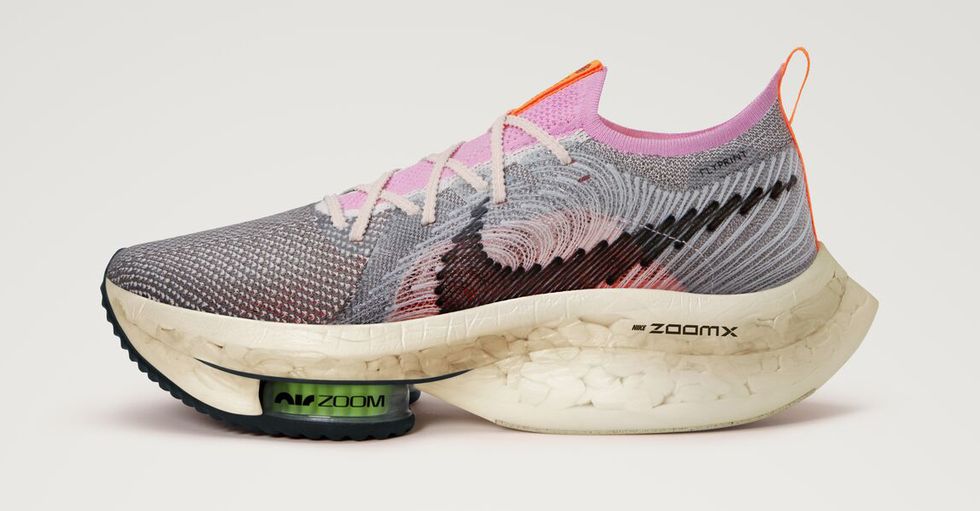
Nike took a big step toward increasing the eco-friendly construction of its performance shoes—starting at the top. The new Air Zoom Alphafly Next Nature is a more sustainable version of its fastest running shoe, built with at least 50 percent recycled content by weight.
The use of recycled and sustainable materials in running shoes is not a new concept. Adidas has been crafting shoes with uppers made from Parley Ocean Plastic, including Ultraboost 21. The Brooks Ghost 14 is that company’s first carbon neutral shoe. And Reebok took things a step further, using foam made from castor bean oil and fabric made from eucalyptus bark for its Floatride Energy Grow. That shoe, however, underperforms the version which uses synthetic parts—the upper isn’t as secure, the sole not nearly as springy.
Nike’s approach, though, is different. It’s not scooping trash from the water or trying to find new, bio-based materials. Instead, it’s simply cutting down on how many scraps it sends to the dump. Nike’s first foray into wasting less was Flyknit, which launched on the Flyknit Racer back in 2012. By stitching together a seamless upper, the company eliminated the leftover materials you’d get when cutting patterns out of a sheet of fabric. It still employs that technology in the Alphafly Next Nature, but also includes the re-use of Pebax scraps for the midsole and Air unit leftovers for the 3D printed overlays on the upper.
Some of the recycled components of the Alphafly Next Nature include:
- ZoomX midsole is made with at least 70 percent recycled foam.
- Air Zoom Pods are made partially with recycled TPU.
- Flyplate is made with at least 50 percent recycled carbon fiber.
- Flyprint, a 3D printed textile, uses at least 20 percent recycled TPU.
- Flyknit is made with at least 45 percent recycled polyester.
- The outsole has at least 10 percent Nike Grind Rubber in the heel and forefoot.
- The sockliner is made from 100 percent recycled PEBA, the material that makes ZoomX foam.
The use of recycled foam scraps for the midsole is an interesting choice. Much of the magic in the Alphafly, and even the Vaporfly Next% 2, comes from that bouncy, springy foam. And we know that when you bond pieces—like gluing multiple layers of foam together—that rigid fused line causes a decrease in cushioning and flexibility. I wanted to see if that’s the case in this model.
Nike asked that I not fully wear-test this demo shoe, but if they really meant that they wouldn’t have sent me a pair in my size, right? So I took it for a short run on our office treadmill. When compared back-to-back to the conventional Alphafly, the sole of the Next Nature feels noticeably firmer to me. It’s still soft and the ride is lively, but the heel, especially, lacks that distinguishable squish-and-release feeling that propels you forward. Because we haven’t received a full size run for wear-testing, we can’t say for certain how it performs but, given that Nike tinkered with its top-of-the-line racer, it’s fairly safe to assume the result is on par with the standard ZoomX setup.
Review by Jeff Dengate, RW Runnier-in-Chief
